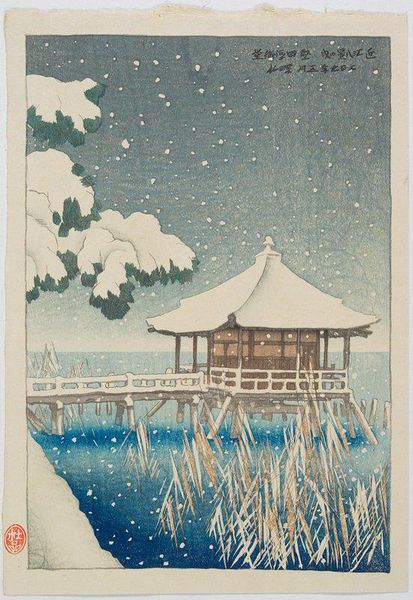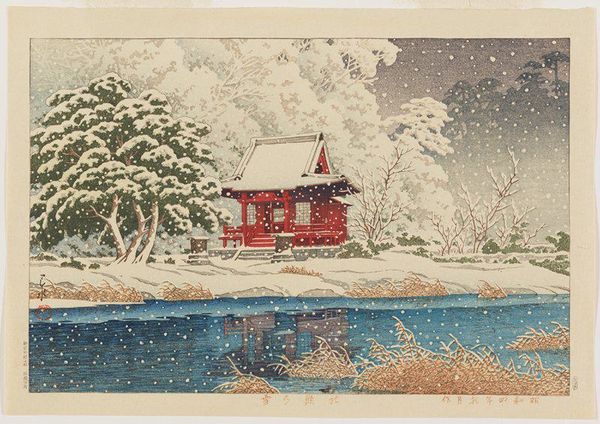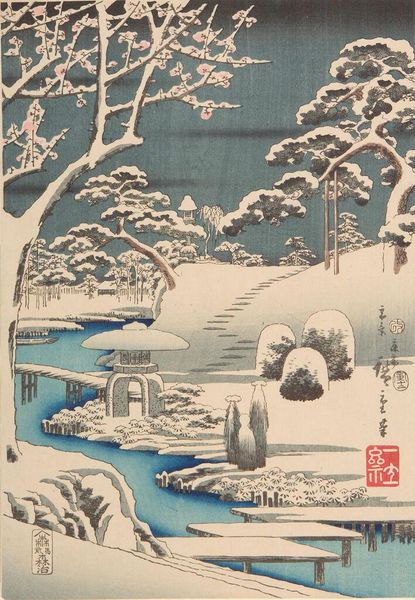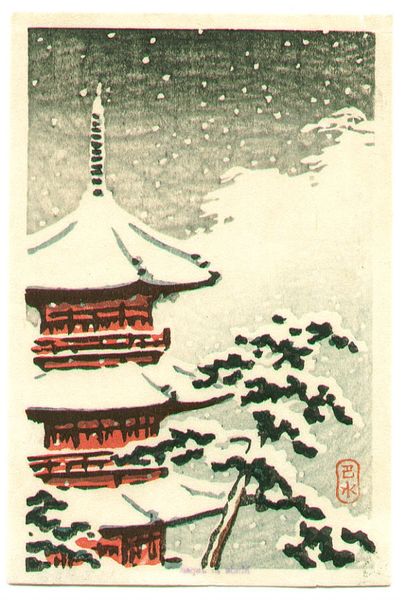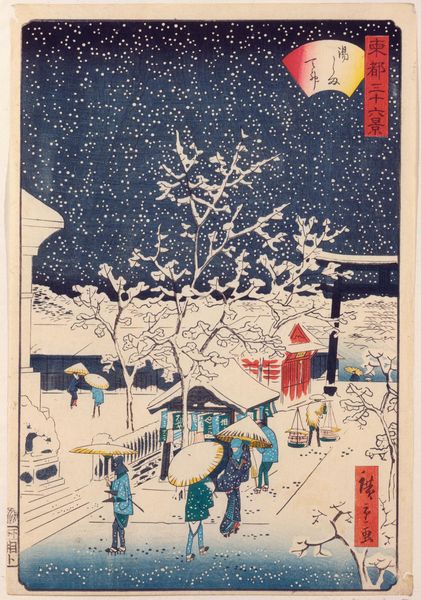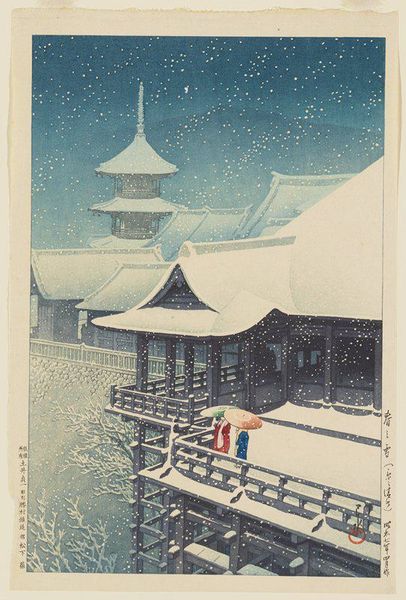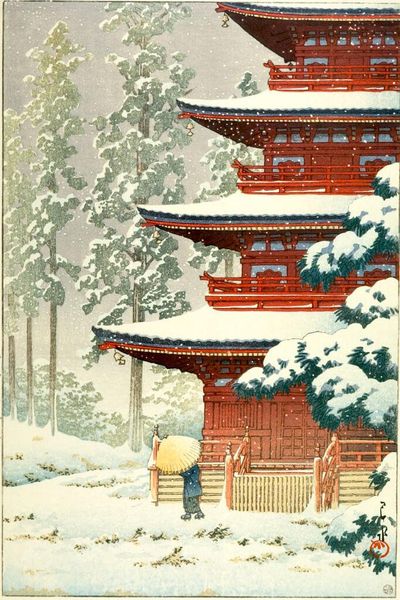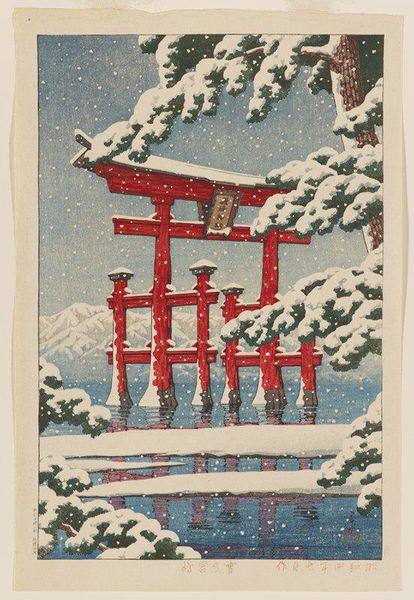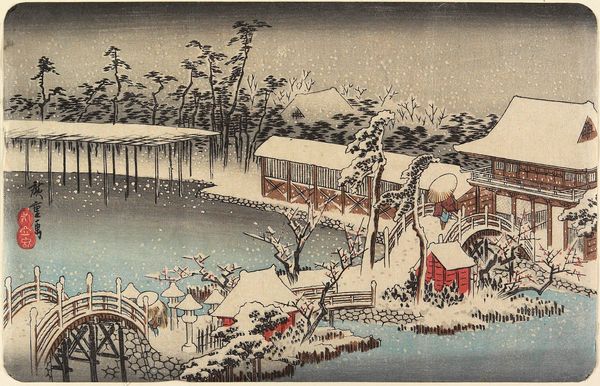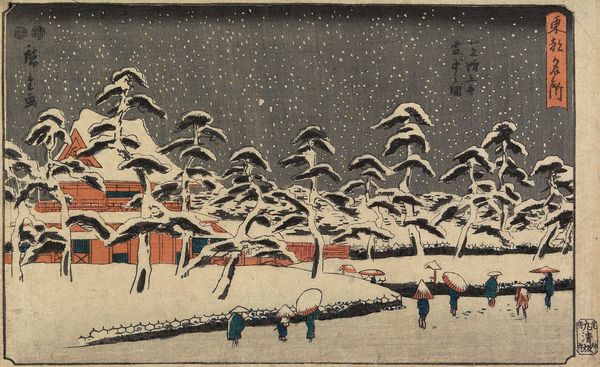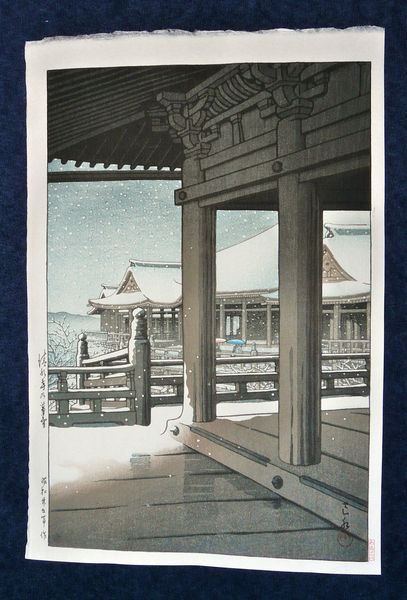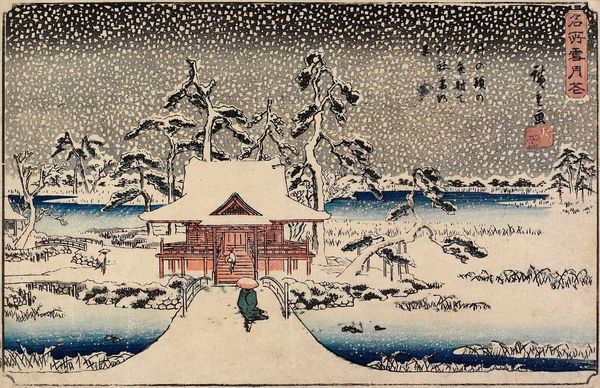
Copyright: Public domain US
Editor: This woodblock print, "Snow on Lake," created in 1922 by Hasui Kawase, is so serene. The falling snow seems to soften the edges of everything. What visual language stands out to you in this piece? Curator: It's compelling how the falling snow veils the world, yet certain symbolic elements persist, bridging nature and architecture. Consider the temple—its multiple tiers can signify spiritual ascent, each level echoing a stage of enlightenment. Even covered in snow, it’s permanence anchors the transient snowfall. Do you notice how this interplay evokes both a sense of the eternal and the ephemeral? Editor: Yes, I see what you mean. The solidity of the temple contrasting with the fleeting snow…It makes me think about cycles. Curator: Precisely. Snow, as a symbol, can represent cleansing and purity but also oblivion. Its visual presence obscures, transforming familiar landmarks. The bare tree in the foreground… notice its delicate, reaching branches. Doesn't it communicate a kind of resilience, even vulnerability, against the force of winter? This represents the strength required to withstand nature. Editor: I hadn't really focused on that tree specifically, but I understand how the bare branches might relate to endurance. The composition makes much more sense now! Curator: And what about the single bird perched on the temple roof? Editor: Wow! It's tiny! I almost missed it! What does the bird suggest? Curator: Birds often symbolize freedom and messengers between worlds. Its solitary presence here, enduring the snowfall, underscores the theme of resilience within nature's grandeur. What has this analysis brought up for you? Editor: I appreciate the depth of symbolism at play here, far beyond what I initially perceived. Thank you for providing insight to the rich hidden narratives and making art meaningful! Curator: Likewise, engaging with art is an unfolding journey, each symbol sparking fresh understanding.
Comments
No comments
Be the first to comment and join the conversation on the ultimate creative platform.
